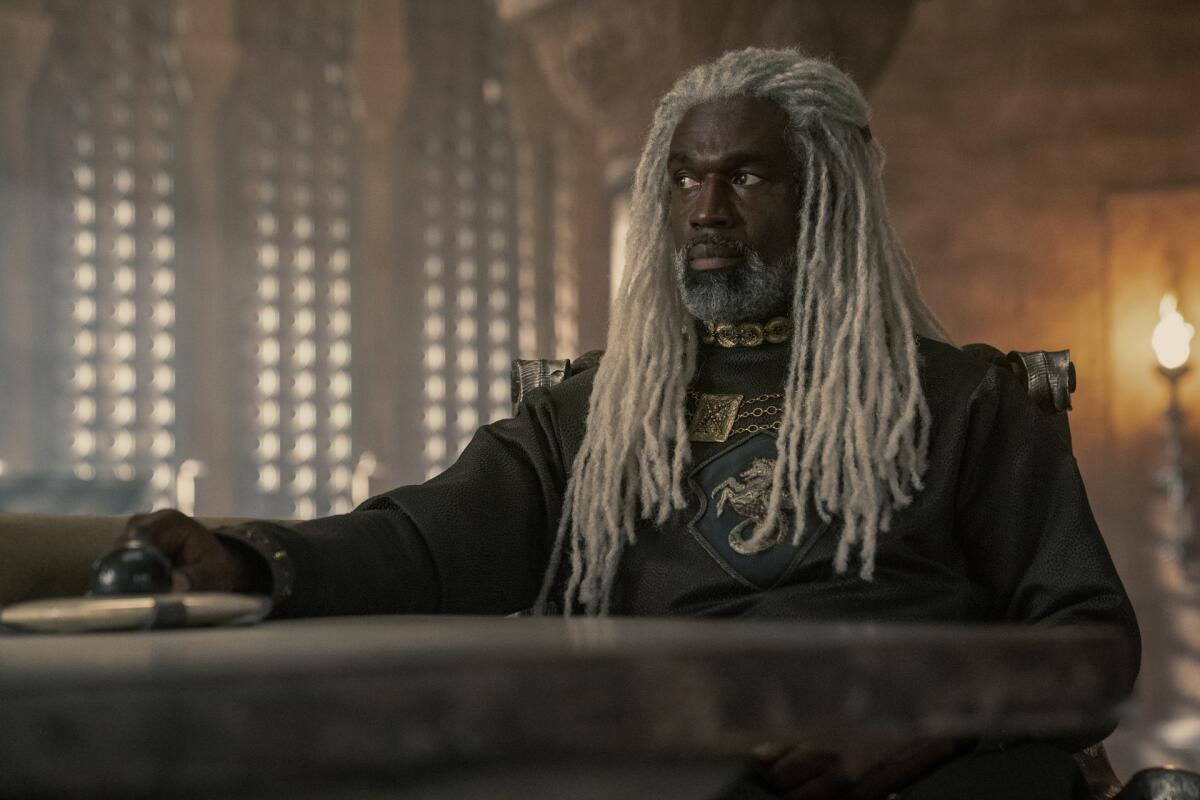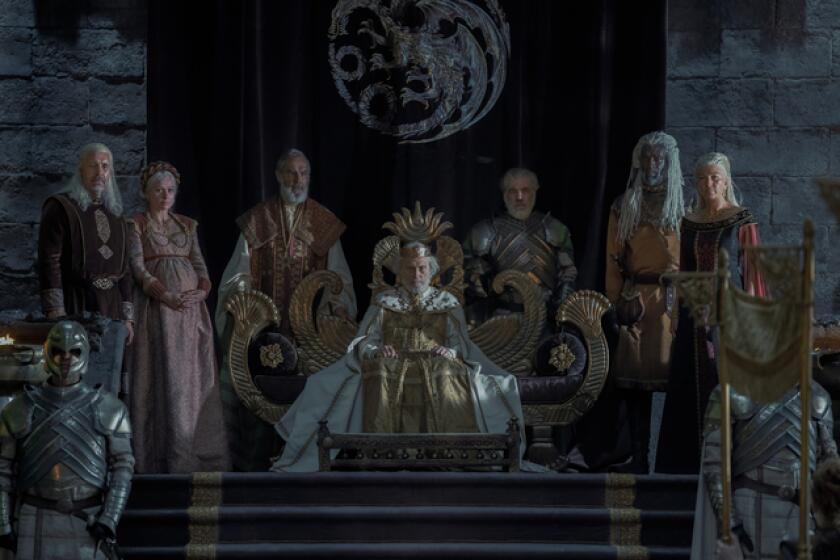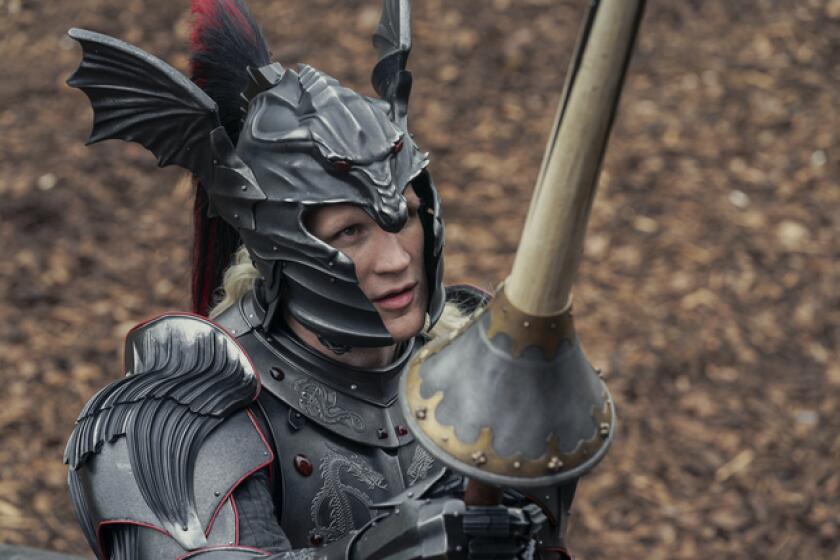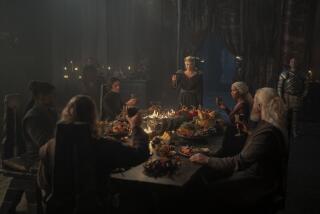‘House of the Dragon’: The Crabfeeder’s war on Westeros, explained

- Share via
The second episode of “House of the Dragon” concluded with Lord Corlys Velaryon forging an alliance with Prince Daemon Targaryen to rid the Stepstones of the Crabfeeder and his forces.
Since the HBO series’ premiere, the master of Driftmark — known as the Sea Snake — has been the only person concerned that this Crabfeeder has been allowed to take over the Stepstones and build up his base of power.
Based on his appearance and Lord Corlys’ reports, Crabfeeder seems to be the first obvious “villain” of “House of the Dragon.” But who is he? And what are the Stepstones? Is Lord Corlys exaggerating, or should the others also be worried about him? Why would the rogue Prince Daemon agree to join forces with Driftmark?
Whether you’re new to Westeros or making a long-awaited return, here’s everything you need know about the ‘Game of Thrones’ prequel, updated weekly.
Who is the Crabfeeder?
First mentioned by Lord Corlys in Episode 1, the Crabfeeder is the alias of Craghas Drahar, the self-appointed prince-admiral of the Triarchy. Drahar is called Crabfeeder for his preferred method of punishing his enemies — staking them on the beach and leaving them for the tides and crabs.
What’s up with his face?
Crabfeeder is shown wearing a mask that covers most of his face. The reason for this look is not explained, but it could be so Crabfeeder appears more intimidating, or because he is shy, or to hide his scarring; it is clear that Crabfeeder has some sort of skin ailment, but what exactly has caused it is left unexplained. (One such condition introduced in “Game of Thrones” is greyscale, a mysterious ailment that turns the flesh of those afflicted flaky and stone-like, but this appears to be distinct from that.)

What is the Triarchy?
The Triarchy is an alliance of three of the Free Cities of western Essos: Myr, Lys and Tyrosh, according to the books. There are nine Free Cities in Essos — including Pentos and Volantis, as mentioned by King Viserys Targeryen in Episode 2 — and most are former colonies of the old Valyrian empire.
Why is it a threat to Westeros?
As King Viserys mentioned in Episode 1, the Triarchy is not much of a threat to Westeros if all it does is rid the Stepstones of pirates. But according to Lord Corlys, Crabfeeder and the Triarchy are also attacking Velaryon ships, which is a problem for Westerosi trade and travel.
Which characters matter? Which Houses are a factor? Why are their names so hard to spell? We have viewers of the ‘Game of Thrones’ prequel covered.
What are the Stepstones?
The Stepstones are a chain of islands that dot the southern edge of the Narrow Sea between the eastern coast of Westeros and the western coast of Essos. The name is apt because, on a map, they look like steppingstones that lead from Westeros to Essos. The largest of the islands is called Bloodstone. Control of these lands is often disputed, and they tend to be a base favored by pirates because major shipping lanes have to pass through the islands.
What are the repercussions of this conflict?
The Stepstones are a strategically important location for trade and travel and would provide a key advantage in any war. For Lord Corlys, a seafaring adventurer with a powerful navy, control over the Stepstones would allow him to flex the full might of his house. For Prince Daemon, who seems intent on proving he doesn’t need King Viserys’ permission or acknowledgement to become a ruler on his own terms, the Stepstones would be added territory he could claim as his own. Or, if the Crabfeeder prevails, it could give the Triarchy or the other Free Cities a boost of confidence in any plans they may have to invade Westeros.
More to Read
The complete guide to home viewing
Get Screen Gab for everything about the TV shows and streaming movies everyone’s talking about.
You may occasionally receive promotional content from the Los Angeles Times.









